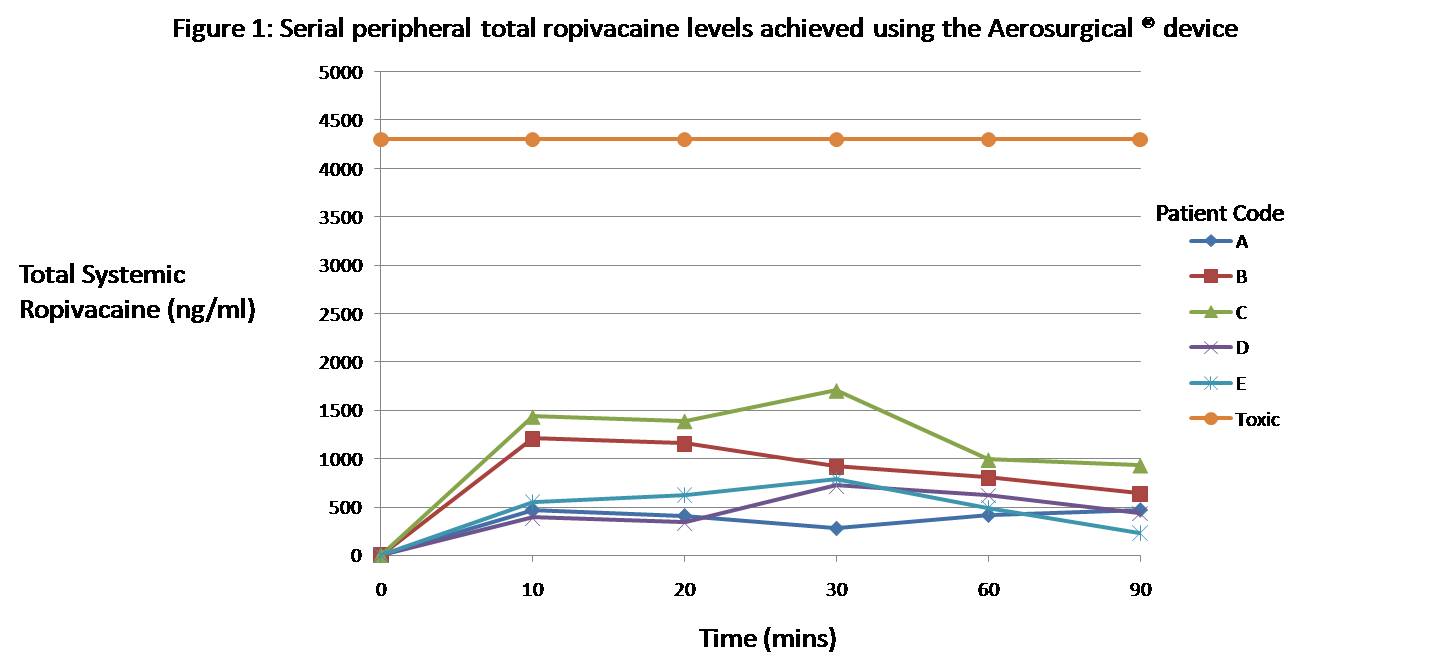A M Mcdermott, MD, K Mieske, MD, K H Chang, MD, A Abeidi, MD, B H Harte, MD, M J Kerin, MD MCh, O J Mcanena, MD. Discipline of Surgery, School of Medicine, National University of Ireland, Galway, Ireland and the Galway Clinic, Doughiska, Galway, Ireland
Introduction
Laparoscopic surgery has revolutionised the management of many common general surgical and gynaecological procedures. However it is not pain free. Post-operative and shoulder tip pain, prolongs inpatient stay and frequently negates the principles of laparoscopic day surgery. Amelioration of postoperative pain is a key end-point to drive novel minimally invasive approaches such as single port surgery and NOTES. Intraperitoneal (IP) delivery of local anesthetic is a recognised technique to reduce this post-operative pain. A novel device which delivers aerosolised ropivacaine along with carbon dioxide insufflation has been devised (Aerosurgical ®). That device has been evaluated in animal models but its feasibility and safety has yet to be assessed in humans. This study evaluates the feasibility and safety profile of this device. Systemic ropivacaine levels were measured over time.
Methods
Ethical approval was obtained. Five patients were evaluated. Five millilitres of 1% ropivacaine was delivered using the aerosurgical device. Serial venous blood samples were measured at 6 timepoints, from 0 to 90 minutes. Serum total ropivacaine levels were then determined using liquid chromatography and mass spectrometry.
Results
The device successfully delivered five millilitres of ropivacaine insufflating one litre per minute of carbon dioxide over five minutes. The aerosolised solution is visable as a homogenous gas within the peritoneal cavity. Total systemic ropivacaine levels achieved at each timepoint were well below (max. 1705ng/ml) the toxic level (4300ng/ml). Peak systemic ropivacaine concentration was reached between 10 and 20 minutes (see Figure 1). Levels tapered to insignificant levels at 90 minutes (540.7ng/ml ± 260.5 ng/ml). There were no complications of drug administration.
Conclusion
This device delivers aerosolised intraperitoneal local anesthetic safety. Systemic ropivacaine levels at this dose are well below toxic levels and allow for flexibility in increasing the dose to improve efficacy. This preliminary study confirms AILA is feasible and safe. It has major potential in the practical application of "true" day case laparoscopic surgery.
Session Number: SS10 – Novel Technologies & Operations
Program Number: S064
